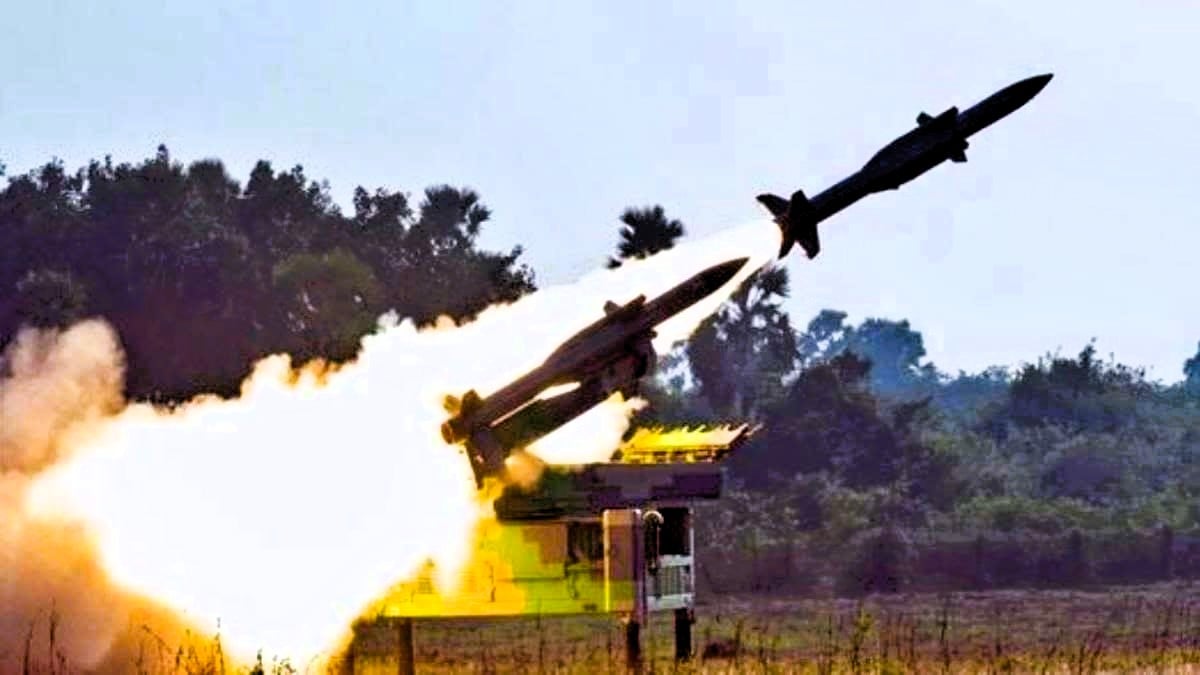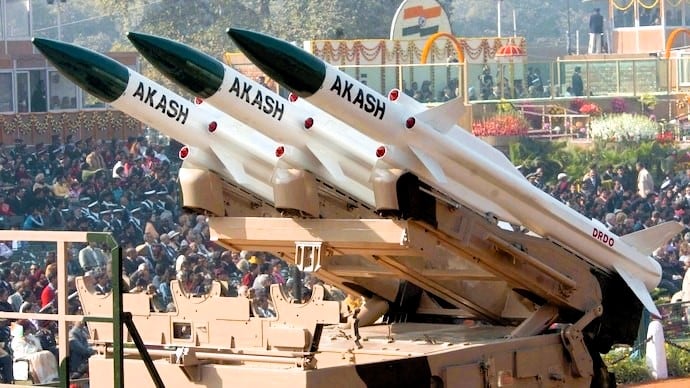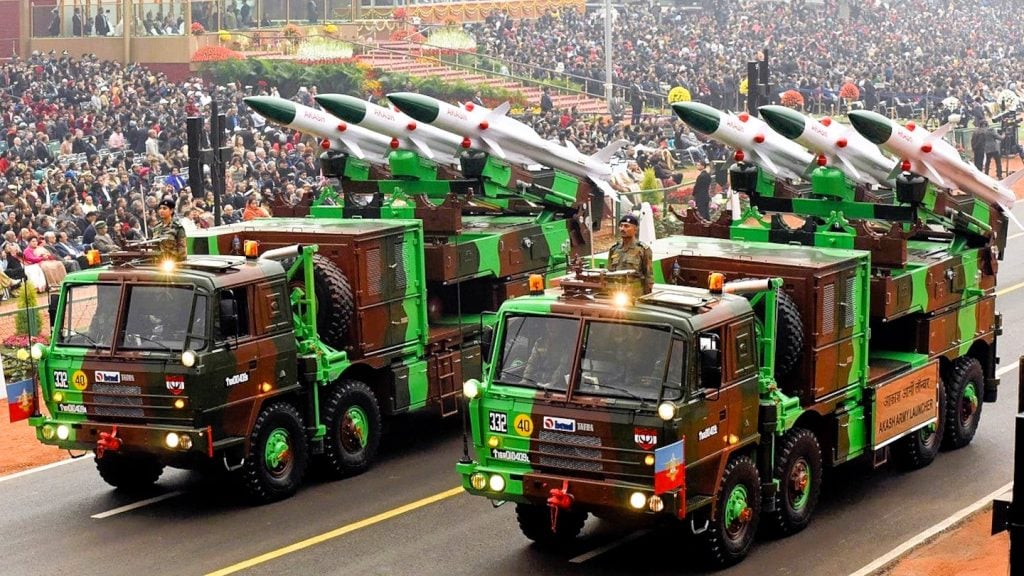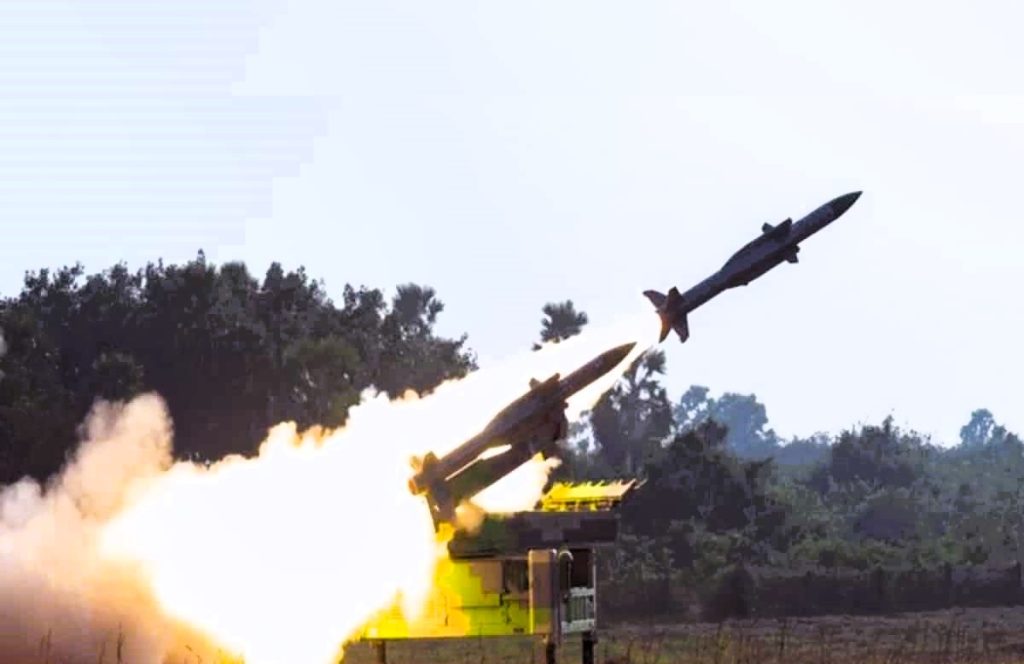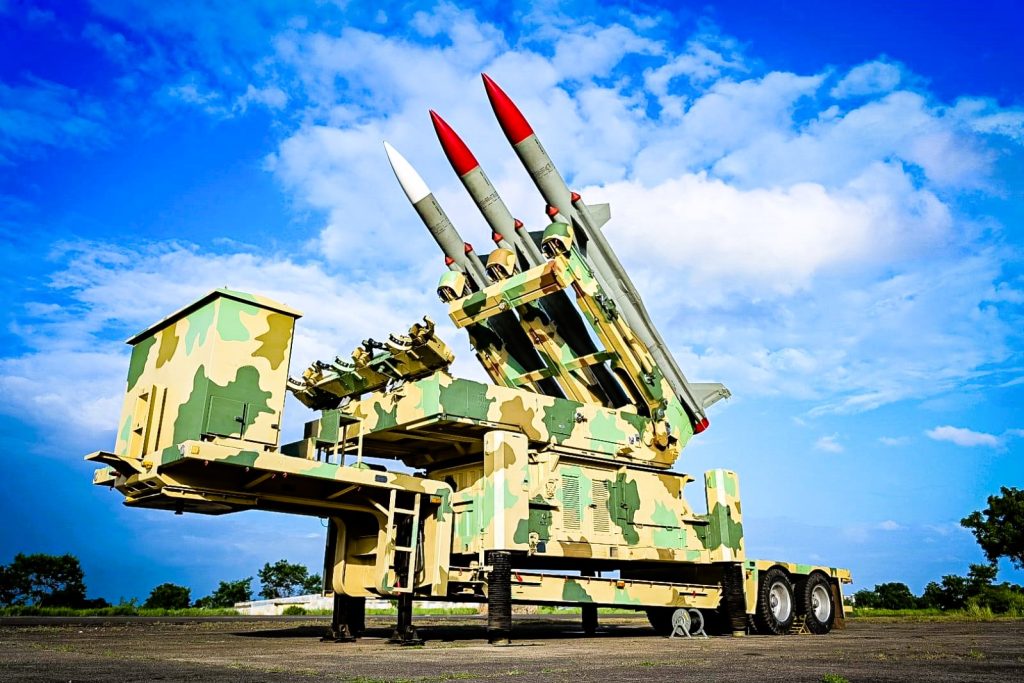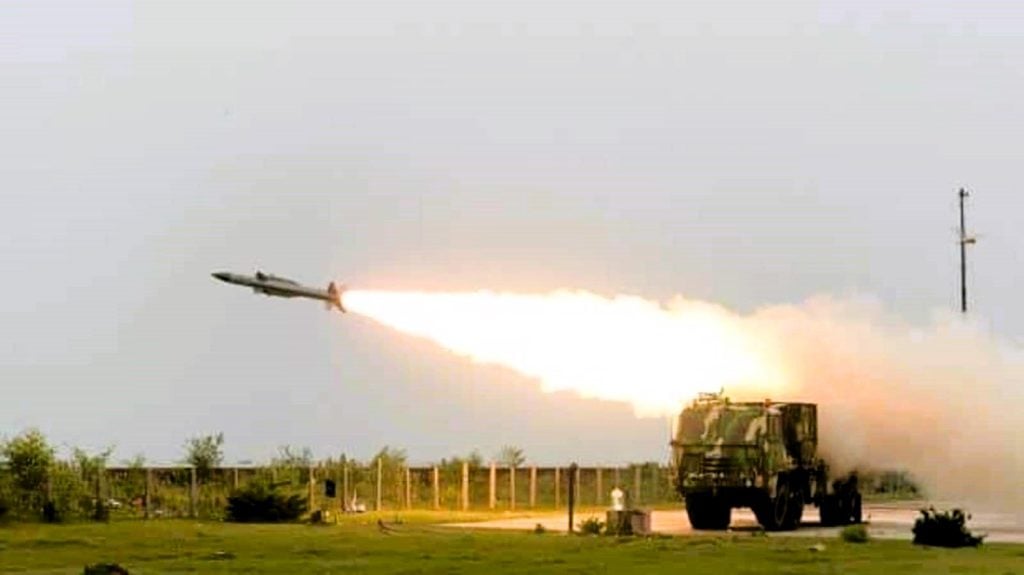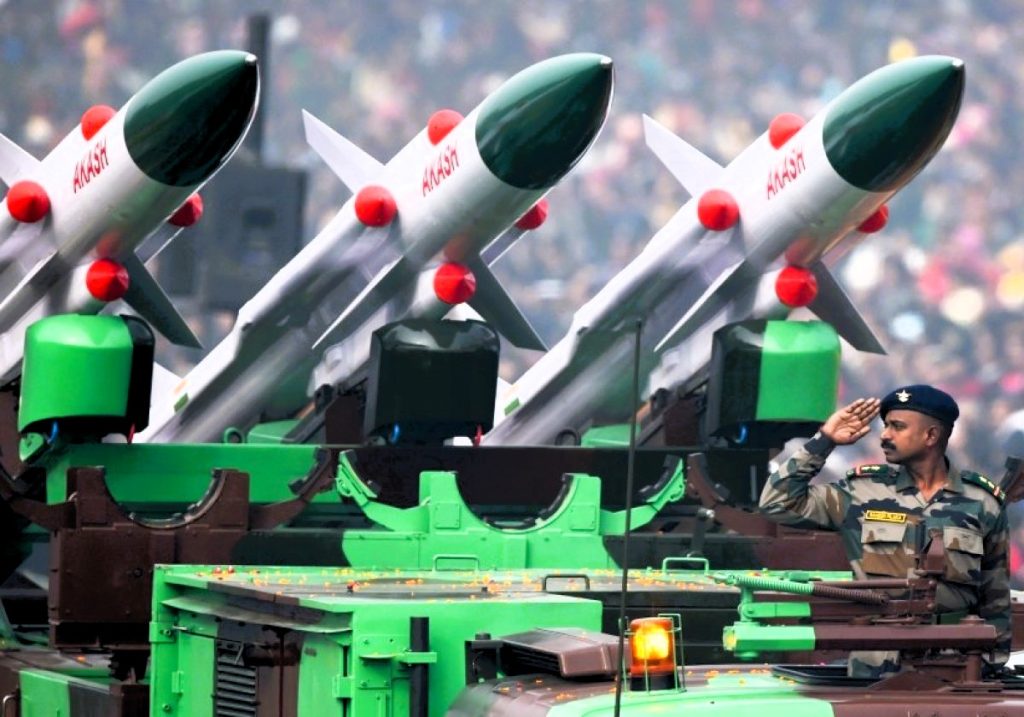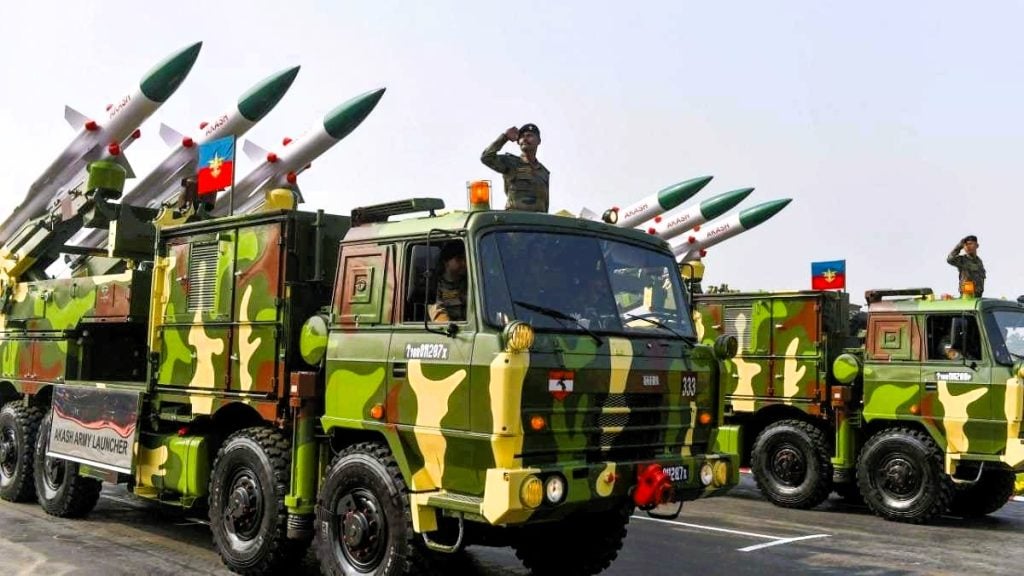India’s indigenous defence capabilities have been steadily on the rise, with the Akash Surface-to-Air Missile (SAM) system being a shining example of the country’s technological prowess. Developed under the Integrated Guided Missile Development Programme (IGMDP), the Akash Surface-to-Air Missile system has emerged as a formidable air defence solution, providing multidirectional and multitarget area protection against a range of aerial threats.
The Akash Surface-to-Air Missile System: An Overview
The Akash SAM system is a mid-range, all-weather surface-to-air missile developed by India’s Defence Research and Development Organisation (DRDO). Designed to replace the aging Russian 2K12 Kub (SA-6 Gainful) missile system, the Akash boasts a comprehensive suite of features that make it a versatile and capable air defence solution.
Flexible Deployment and Multitarget Engagement
One of the key advantages of the Akash SAM system is its ability to be launched from both static and mobile platforms, such as battle tanks and wheeled trucks. This flexibility in deployment allows for greater agility and responsiveness in the face of evolving threats. Additionally, the Akash system is capable of engaging multiple targets simultaneously, making it a formidable defence against a wide range of aerial threats, including fighter aircraft, cruise missiles, and unmanned aerial vehicles (UAVs).
Advanced Radar and Guidance Systems
The Akash SAM system is equipped with a suite of advanced radar and guidance systems that enable precise target tracking and engagement. The system’s central component is the Rajendra radar, a 3D passive electronically scanned array (PESA) radar capable of tracking up to 64 targets within a range of 60 kilometers. The Rajendra radar provides critical data on the range, azimuth, and altitude of the targets, which is then relayed to the Group Control Centre (GCC) for coordinated engagement.
Propulsion and Warhead Capabilities
The Akash missile itself is powered by a ramjet-rocket propulsion system, allowing it to achieve supersonic speeds ranging from Mach 2.8 to 3.5 and engage aerial targets at a range of approximately 25 kilometers. The missile can carry a 60-kilogram warhead, which can be either a conventional or a nuclear payload, further enhancing its destructive capabilities.
Akash Surface-to-Air Missile System Development and Testing
The Akash SAM system has a long and storied development history, tracing its origins back to the 1980s as part of the IGMDP. The program involved the collaborative efforts of over 300 public and private companies, with various DRDO laboratories responsible for the system’s integration, missile development, radar manufacturing, and other critical components.
Developmental Trials and Induction
The maiden trial firings of the Akash missile were conducted in 1990, with developmental trials continuing until 1997. The system was then demonstrated for target interception capability against live aerial targets in 2005, followed by a series of successful field trials. The Indian Air Force (IAF) formally inducted the Akash SAM system in 2008, while the Indian Army (IA) received its first batch of Akash missiles in 2015.
Continuous Upgrades and Enhancements
The Akash SAM system has undergone continuous upgrades and enhancements to keep pace with evolving threats and technological advancements. In 2010, DRDO initiated the development of the Akash-NG (New Generation) missile, which features improved capabilities, including a domestically developed radio frequency (RF) seeker and enhanced targeting performance against high-speed, agile aerial targets. The successful testing of the Akash-NG in 2021 and 2024 has paved the way for user trials and eventual induction into the armed forces.
Ranks in Indian Army, Airforce and Navy
Akash Surface-to-Air Missile System Capabilities and Performance
The Akash SAM system has demonstrated impressive capabilities in various operational scenarios, showcasing its effectiveness in protecting critical assets and engaging a diverse range of aerial targets.
Multidirectional and Multitarget Area Defence
One of the Akash system’s key strengths is its ability to provide multidirectional and multitarget area defence. The system can simultaneously track and engage multiple targets, including fighter aircraft, cruise missiles, and UAVs, making it a formidable deterrent against complex air threats.
Autonomous Operation and Engagement
The Akash SAM system is designed to operate autonomously, with the Rajendra radar and the GCC working in tandem to provide real-time target information and coordinate the engagement process. This level of autonomy enhances the system’s responsiveness and effectiveness in the face of rapidly evolving air combat scenarios.
Impressive Kill Probability and Interception Capabilities
The Akash SAM system boasts a respectable kill probability of 88% for the first missile and up to 99% for the second missile on a target. Its ability to intercept targets at ranges up to 30 kilometers and altitudes of up to 18,000 meters further underscores its impressive performance.
Resilience against Electronic Countermeasures
The Akash system’s terminal guidance system and the Rajendra radar’s standalone guidance capabilities make it resilient against electronic countermeasures, ensuring its effectiveness even in the face of advanced electronic warfare tactics.
What is Camouflage and Why Soldiers use it?
Akash Surface-to-Air Missile System Contractors and Partnerships
The development and production of the Akash SAM system involve a wide range of public and private entities, showcasing the collaborative nature of India’s defence ecosystem.
DRDO and Associated Laboratories
The DRDO, India’s premier defence research organization, has played a pivotal role in the Akash SAM system’s development. Various DRDO laboratories, such as the Defence Research & Development Laboratory, the Research & Development Establishment, and the Electronics & Radar Development Establishment, have contributed to the system’s integration, missile development, radar manufacturing, and other critical components.
Public and Private Sector Partnerships
The Akash SAM system’s production and delivery involve key partnerships with both public and private sector entities. Bharat Electronics Limited (BEL) is responsible for the radar and electronic support systems, while Bharat Dynamics Limited (BDL) serves as the system integrator and nodal agency for Akash SAM production for the Indian Army. Tata Power and Larsen & Toubro have also contributed to the development of the launcher systems.
10 Top Anti Tank Missiles in the World
Conclusion
The Akash Surface-to-Air Missile system stands as a testament to India’s growing defence capabilities and its commitment to self-reliance in the domain of military technology. With its impressive performance, continuous upgrades, and expanding domestic and export potential, the Akash SAM system is poised to play a pivotal role in safeguarding India’s airspace and strengthening its strategic deterrence. As the country continues to invest in the development of indigenous defence systems, the Akash represents a shining example of the nation’s technological prowess and its ability to meet the evolving security challenges of the 21st century.
FAQs
1. What is the range and altitude capabilities of the Akash SAM system?
The Akash missile can intercept targets within a range of 30 to 35 kilometers and at altitudes up to 18,000 meters.
2. What type of propulsion system does the Akash missile use?
The Akash missile is powered by a ramjet-rocket propulsion system, allowing it to achieve supersonic speeds ranging from Mach 2.8 to 3.5.
3. How many targets can the Akash SAM system engage simultaneously?
The Akash SAM system is capable of engaging and neutralizing multiple targets concurrently, making it a highly effective air defence solution.
4. What is the Akash-NG (New Generation) missile, and how does it differ from the original Akash?
The Akash-NG is an advanced version of the Akash SAM system, featuring improved capabilities such as a domestically developed radio frequency (RF) seeker and enhanced performance against high-speed, agile aerial threats.
